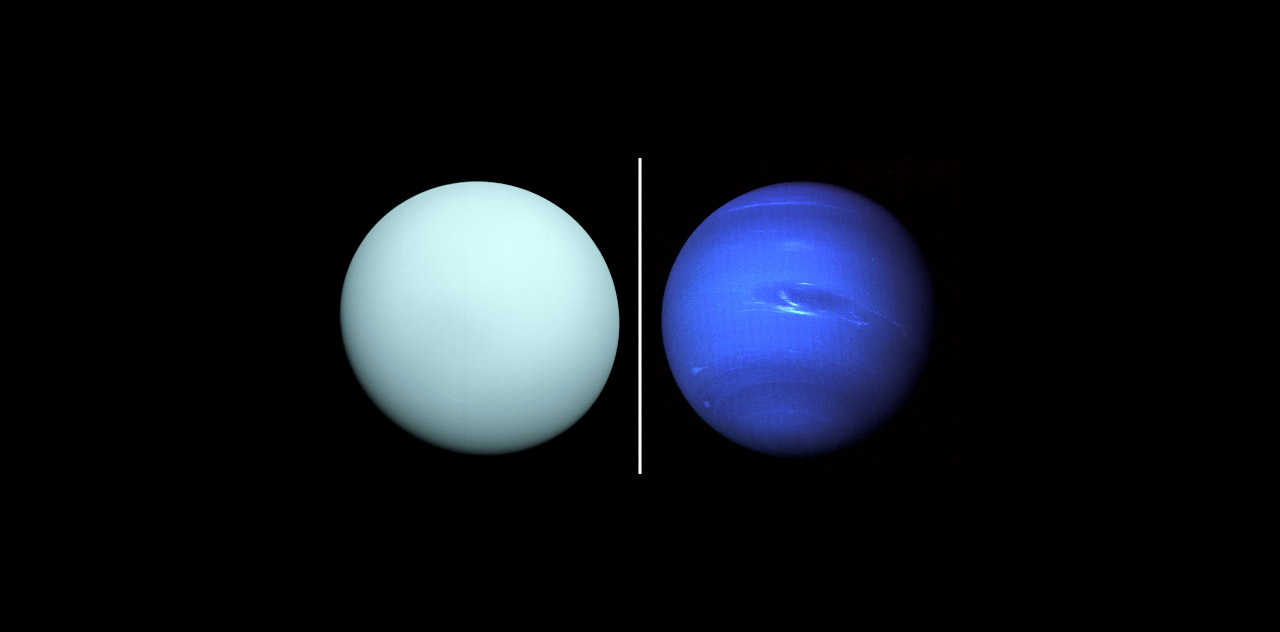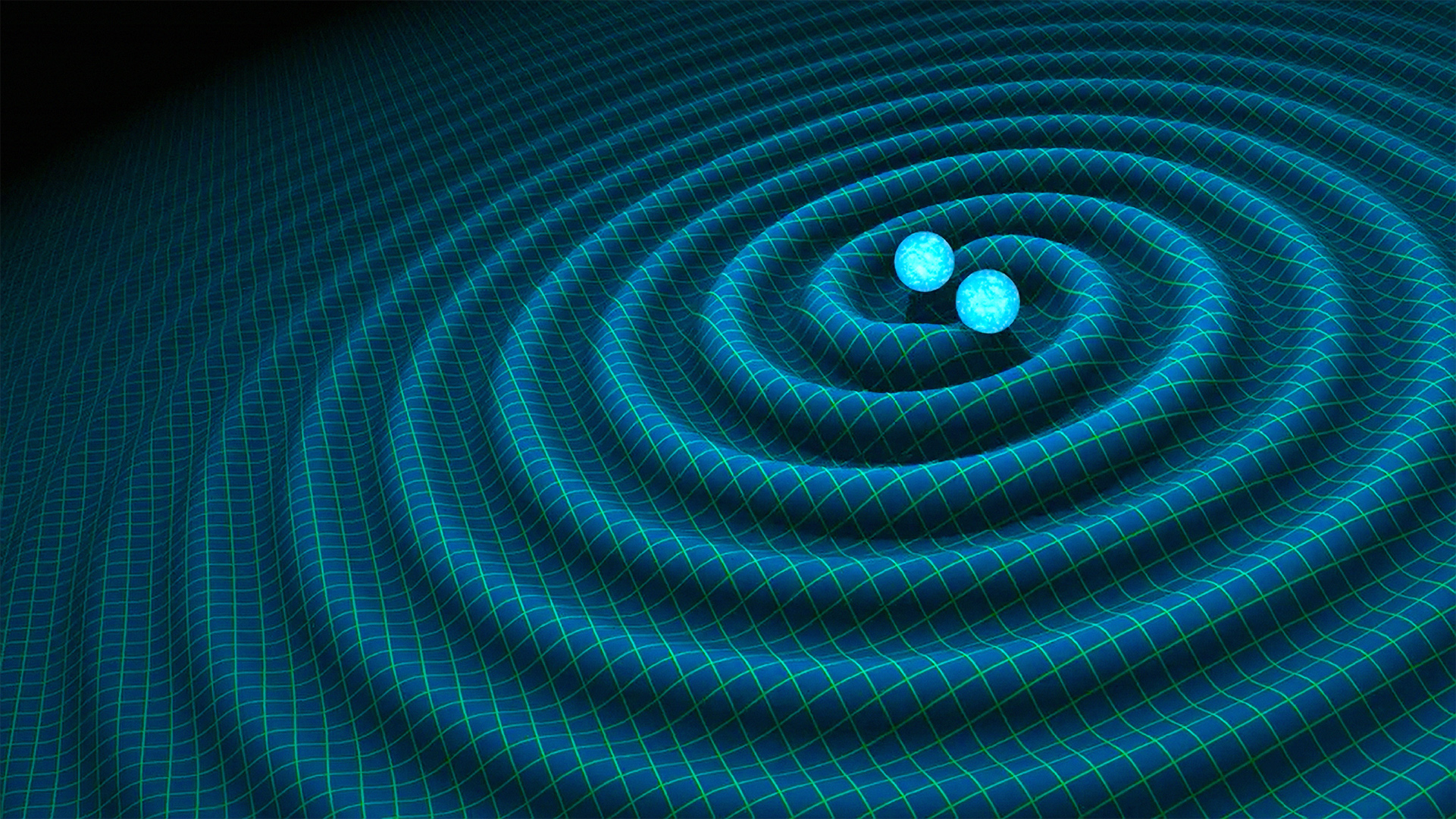
A mission to Uranus and Neptune could act as massive gravitational-wave detector

Paul M. Sutter is an astrophysicist at SUNY Stony Brook and the Flatiron Institute, host of Ask a Spaceman and Space Radio, and author of How to Die in Space. He contributed this article to Space.com's Expert Voices: Opinions and Insights.
What if one mission could study the gravitational waves triggered by some of the most violent events in the universe — on the way to observing the least-known planets of our solar system?
Planetary scientists are desperate for a new probes to Uranus and Neptune, since these ice giant worlds haven't been visited since the Voyager mission flybys of the late 1980s. And while such a spacecraft would unearth a treasure trove of information about these solar system siblings, it could also peer much deeper into the universe, scientists say in a new analysis: By carefully monitoring variations in the radio signals from one or more such spacecraft, astronomers could potentially see the ripples in gravity caused by some of the most violent events in the universe.
Related: Voyager at 40: 40 Photos from NASA's epic 'grand tour' mission
Ice, ice baby
Poor Uranus and Neptune. The only close-up images we have of those outer worlds come to us from the Voyager 2 spacecraft, which swung by those planets on its "Grand Tour" in the late 1980s. Since then, we've sent probes to Mercury, missions to Jupiter and Saturn (including landing on the latter's moon Titan), collected samples of asteroids and comets, and launched rover after rover to Mars.
But not Uranus or Neptune. Those worlds, now known as "ice giants" because water and ammonia ices dominate their composition, sit lonely in the outer fringes of our celestial neighborhood. There are no other worlds in the solar system quite like them, and an entire generation of planetary scientists have been able to study them with only ground-based telescopes and occasional glimpses from the Hubble Space Telescope.
Some of that delay has been out of our hands. Even Neptune at its closest sits over 2.7 billion miles (4.3 billion kilometers) away from the Earth.The extreme distance to Neptune and Uranus makes it incredibly hard to launch payloads there.
Get the Space.com Newsletter
Breaking space news, the latest updates on rocket launches, skywatching events and more!
But an opportunity is coming soon, window during which Jupiter lines up just right to offer a much-needed velocity-boosting gravitational assist and cut travel time to the outer system. If we were to launch a mission in the early 2030s on a sufficiently powerful rocket, like NASA's Space Launch System, a mission could reach Jupiter in a little less than two years for that speed boost. From there, a single spacecraft could separate into two components, one headed for Uranus (reaching it in 2042) and another for Neptune (achieving orbit a couple years after that).
Once in place, if luck prevails, those orbiters could maintain their station for over a decade, as the famed Cassini mission did at Saturn.
A shift to the left
During the long cruise to those icy destinations, those same space probes could also offer insight into a very different type of science, that of gravitational waves, as detailed in a paper recently uploaded to the preprint server arXiv.org and submitted to the Monthly Notices of the Royal Astronomical Society Letters.
During the course of the flight, scientists and technicians on the ground would constantly have to communicate with the spacecraft, updating its trajectory and checking its status. And conversely, the spacecraft would constantly radio back information to the Earth.

Light waves bouncing back and forth along an extremely long path.
Sound familiar? On Earth, physicists reflect laser beams along miles-long tracks to measure passing gravitational waves. As the waves (which are ripples in the fabric of spacetime itself) pass through the Earth, they distort objects, compressing and stretching them in alternating series. Inside the detector, these waves subtly change the length between distant mirrors, affecting the path of light in the gravitational wave observatories by a minute amount (usually less than the width of an atom).
For radio communications from a distant space mission back to Earth, the effect is similar. If a gravitational wave passes through the solar system, it would change the distance to the spacecraft in a regular way, causing the probe to be ever-so-slightly closer to us, then farther away, then closer again. If the spacecraft was sending a transmission the entire cruise, we would see a resulting Doppler shift in the frequency of its radio communication. Having two such spacecraft acting at once would give astronomers sharper observations of that shift.
In other words, these far-flung space probes could do double-duty as the largest gravitational wave observatories in the world.
The greater universe
The biggest technological hurdle is the ability to measure the frequency of the spacecraft's radio communications to an incredibly high precision. According to the recent research, our ability to measure this must be at least 100 times better than we could achieve for the Cassini mission to Saturn.
That sounds like a lot, but it's been decades since Cassini was designed, and we've been improving our communication technologies the whole time. And physicists are currently designing their own space-based gravitational wave detectors, like the Laser Interferometer Space Antenna (LISA), which will require similar technology anyway. Since an ice giant mission is still almost a decade away, we could pour even more resources into developing the necessary technology.
If we can crack that level of sensitivity, then the extreme length of this gravitational wave detector "arm" (literally billions of times longer than our current detectors) could reveal a variety of extreme events in the universe. Due to its incredible length, this "ice giant observatory" would be sensitive to an entirely different class of events than what we can observe today. According to the research, during the lifespan of such a mission, the probes are likely to detect a few dozen mergers of black holes with extreme mass differences, and at least one merger of a supermassive black hole. These are events that we simply have not observed, and cannot observe, with current gravitational wave detectors.
Oh, and we would also get to learn about Uranus and Neptune.
Follow us on Twitter @Spacedotcom or Facebook.
Join our Space Forums to keep talking space on the latest missions, night sky and more! And if you have a news tip, correction or comment, let us know at: community@space.com.

Paul M. Sutter is an astrophysicist at SUNY Stony Brook and the Flatiron Institute in New York City. Paul received his PhD in Physics from the University of Illinois at Urbana-Champaign in 2011, and spent three years at the Paris Institute of Astrophysics, followed by a research fellowship in Trieste, Italy, His research focuses on many diverse topics, from the emptiest regions of the universe to the earliest moments of the Big Bang to the hunt for the first stars. As an "Agent to the Stars," Paul has passionately engaged the public in science outreach for several years. He is the host of the popular "Ask a Spaceman!" podcast, author of "Your Place in the Universe" and "How to Die in Space" and he frequently appears on TV — including on The Weather Channel, for which he serves as Official Space Specialist.









